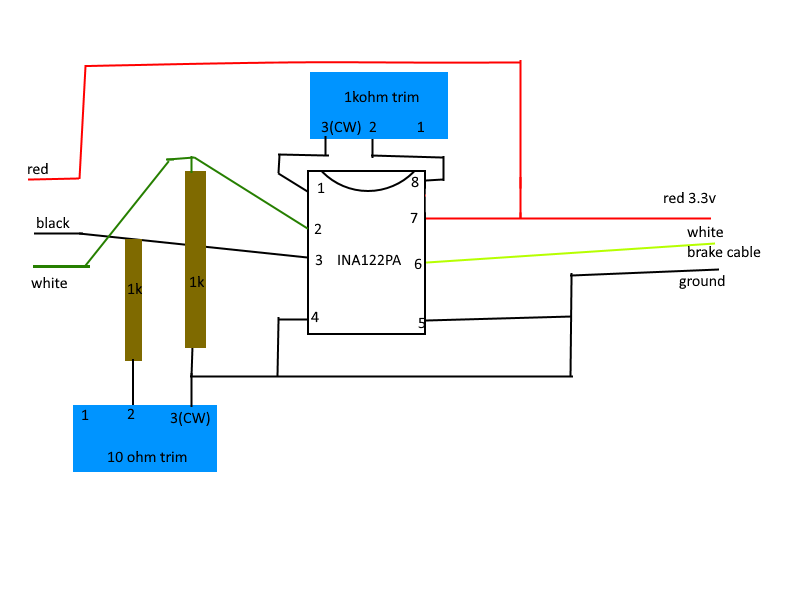Hi!
At first glance, the circuit you have drawn looks fine, so I guess some simple troubleshooting tips would be the next step.
First, I'd check that the voltages into the amp look ok, especially since you mention seeing over 6v. Could you measure the voltage between the following pins please?
- 4 and 7 - should be around 3.3v
- 4 and 3 - should be around 1.65v
- 4 and 2 - should be around 1.65v
- 3 and 2 - should be < 5mV (you'll need to pay close attention to the scale on your multimeter for this one). Don't worry about exact numbers as this is the value you have to tweak to calibrate, it just has to be pretty small
The first 3 will give an indication if something is not wired up correctly. The last one gives an idea about how far out the initial calibration is as this voltage difference is the thing that actually gets amplified.
The calibration is a bit of a dance between tweaking the 10ohm pot (which tweaks the balance of the bridge) and the 1kohm pot (which tweaks the amplification of the voltage between pins 3 and 2). The reason for this is because the G29 works in reverse, taking a higher voltage as less brake pressure, so we have to have unbalance the bridge to allow the circuit to provide the higher voltage with no load.
Hello, I am a noob in electronics and I tried to follow this project withnot much success. At first it acted like there wasn't anything attached (oscillating at around 15% brake), then I modified the circuit adding cables that connect all ground to the pedal metal chassis and it now does the same thing but at around 3%... there are many things that can have gone wrong: 1) Defective components from China 2) I ruined some components while soldering/by making a circuit that sends power where it shouldent 3) By having got the whole thing wrong. 4) got the wrong resistors I have a backup loadcell and a backup INA122, but since I fear I might ruin those too, here I send a quick drawing (sorry for the poor quality) of my circuit as it stands. Also worth noting that if I test the voltage between the red cable from any of the pedals and ground, it reads 6.3v, so I either do not know how to test it or maybe it could be that the G920 has a different voltage than the g29, which seems weird. Thanks for your time!